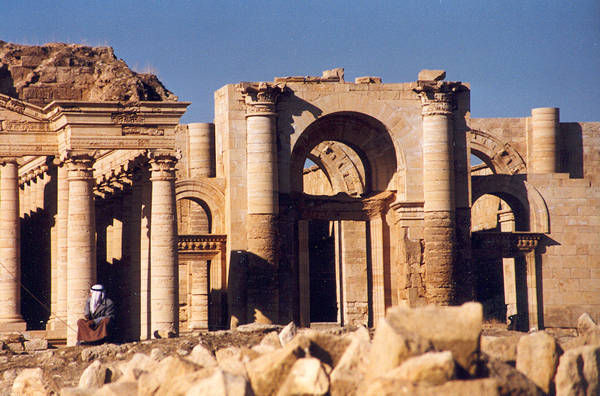Linda Gasparello: ISIS's cultural devastation reaches new level
The ruins of Hatra
There is horror in the recent news that the Islamic State bulldozed the ruins of two of the greatest #assyrian cities #nimrud and #nineveh. And there is irony. These ancient cities, in what is now northern Iraq, were built by a ferocious people whose profession was war – people for whom the Hebrew prophets, including Isaiah, Nahum, Zechariah and Zephaniah, reserved some of their fiercest denunciations.
In the 9th Century B.C., Assurnasirpal II, a brutal militarist, erased entire nations as far as the coast of the Mediterranean Sea, stretching through what is now Syria, Lebanon and northern Israel. But he restored the ancient city of Nimrud and established his capital there. His magnificent Northwest Palace, first excavated by the British explorer Austen Henry Layard in the 1840s, was probably completed between 865 and 869 B.C. Its dedication was celebrated with a banquet for 70,000 guests.
Sennacherib, who moved the capital to Nineveh in 704 B.C., was as bellicose as his forefathers. When the city of #babylon rebelled against his despotic rule, Shennecherib destroyed it, saying, “ The city and its houses, from its foundation to its top, I destroyed, I devastated, I burned with fire. The wall and outer wall, temples and gods, temple towers of brick and earth, as many as there were, I razed and dumped them into the Arahtu canal.” But in Nineveh, he built a palace decorated with precious metals, alabaster and woods. Mountain streams were diverted to provide water for the city's parks and gardens, resplendent with trees and flowers imported from other lands – along with captives who were enslaved and brought back to Assyria to build and tend them.
It is a wonder that these Assyrian kings who were capable of such ruthlessness were also capable of building cities filled with such majestic architecture.
In the 1970s and 1980s, in the time of another ruthless leader, Saddam Hussein, the Iraqi antiquities board reconstructed large parts of Assurnasirpal II's palace, including the restoration and re-installation of the carved-stone reliefs lining the walls of many rooms, according to Augusta McMahon, a professor in the Department of Archaeology at the University of Cambridge.
“The winged bulls that guard the entrances to the most important rooms and courtyards were re-erected. The winged bull statues are among the most dramatic and easily recognized symbols of the Assyrian world,” McMahon wrote in a BBC report.
Nimrud, she added, “provided a rare opportunity for visitors to experience the buildings' scale and beauty in a way that is impossible to find in a museum context.”
That is lost for all of us, now and in future generations.
Fortunately, a significant number architectural artifacts from Nimrud and Nineveh are housed safely in museums in Europe and North America, including the limestone and alabaster reliefs, portraying Assurnasirpal II surrounded by winged demons, or hunting lions or waging war, and the monumental, human-headed winged lions that guarded important palace doorways, currently displayed in the British Museum in London and the Metropolitan Museum of Art in New York.
As if the loss of Nimrud and Nineveh were not horrible enough for world heritage, #isis continued its campaign to eradicate ancient sites it says promote apostasy last week by leveling the ruined city of Hatra, also in northern Iraq, founded in the days of the Parthian Empire over 2,000 years ago. Hatra's massive walls withstood attacks by the Romans.
Irina Bolkova, director-general of UNESCO, said, “The destruction of Hatra marks a turning point in the appalling strategy of cultural cleansing underway in Iraq.”
I hope it does. And I hope that what Zephaniah prophesized for Assyria will befall the Islamic State: “Assyria will be made a desolation.”
Linda Gasparello (lgasparello@kingpublishing.com), is a longtime journalist and the co-host of “White House Chronicle,” on PBS. She was a master's candidate in Arabic and Islamic Art and Architecture at the American University in Cairo.
